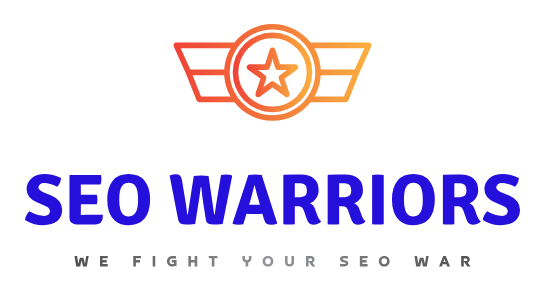In order to increase your website’s visibility and drive more organic traffic from Google, it’s important to implement effective SEO techniques. By optimizing your website and content, you can improve your search engine rankings and attract more visitors. Here are some top strategies for boosting your Google traffic.

Key Takeaways:
- Implementing effective SEO techniques is crucial for driving more organic traffic from Google.
- Optimize your website and content to improve search engine rankings.
- Attract more visitors and increase website visibility.
- Boost your online presence and enhance search engine optimization.
- Drive more web traffic with top strategies for higher Google ranking.
Target Relevant Primary and Secondary Keywords
Keyword research is the foundation of a successful SEO strategy. By conducting thorough keyword research, you can identify the primary and secondary keywords that will help drive targeted traffic to your website. Utilizing tools like the Keyword Magic Tool can assist in finding the most relevant keywords that align with your business or topic.
Primary keywords are the main focus of your content and should accurately represent what your website offers. These keywords typically have higher search volumes and more competition. Secondary keywords, on the other hand, support and complement your primary keywords. They help provide context and further optimize your content for a wider range of search terms.
When selecting primary and secondary keywords, it’s essential to consider their search volumes and competition. Choosing keywords with high search volumes can lead to more visibility and potential traffic. However, highly competitive keywords may be challenging to rank for. It’s important to strike a balance between relevance, competition, and search volume when selecting your target keywords.
Once you have identified your primary and secondary keywords, you can incorporate them strategically into your website’s content. This includes optimizing your page titles, headings, meta descriptions, and body text to match the intent behind these keywords. By doing so, search engines can better understand your content and match it with relevant user queries.
Example:
For instance, if you have a travel blog, your primary keyword could be “best travel destinations,” while your secondary keyword could be “travel tips for beginners.” By incorporating these keywords into your blog posts, you can attract both seasoned travelers and those new to the travel experience.
Remember, keyword research is an ongoing process. As the search landscape evolves and user behavior changes, it’s important to regularly revisit and update your keyword strategy to stay ahead of the competition.
| Benefits of Targeting Primary and Secondary Keywords | Examples |
|---|---|
| Increased search visibility and organic traffic | Optimizing your website for relevant keywords can improve your rankings in search engine results pages (SERPs), resulting in higher visibility and increased organic traffic. |
| Better audience targeting | By selecting keywords that align with your target audience’s interests and search intent, you can attract more qualified visitors to your website. |
| Improved conversion rates | When you target keywords that accurately represent your products or services, you increase the likelihood of attracting visitors who are more likely to convert into customers. |
| Enhanced user experience and engagement | By creating content that addresses users’ search queries and provides valuable information, you can improve user experience and increase engagement metrics like time on page and bounce rate. |

Write High-Quality, Original Content
Creating high-quality, original content is crucial for achieving SEO success. When you provide valuable content that answers your audience’s questions and solves their problems, you increase your chances of ranking well in search engines. To further enhance the quality and originality of your content, consider using the SEO Writing Assistant.
The SEO Writing Assistant is a powerful tool that analyzes various aspects of your content, including readability, SEO optimization, originality, and tone of voice. By utilizing this tool, you can ensure that your content meets the highest standards of quality and relevance.
Remember, high-quality, original content is the cornerstone of any successful SEO strategy. Focus on creating content that resonates with your audience, provides them with valuable insights, and stands out from the competition.
Key Benefits of Using the SEO Writing Assistant:
- Improve Readability: The tool offers suggestions to enhance the readability of your content, ensuring that it is easy to understand and engaging for your readers.
- Optimize for SEO: The SEO Writing Assistant provides valuable insights and recommendations to help you optimize your content for search engines.
- Enhance Originality: By analyzing your content’s originality, the tool helps you avoid plagiarism and ensures your content is unique and authentic.
- Refine Tone of Voice: The SEO Writing Assistant provides valuable suggestions to help you maintain a consistent tone of voice throughout your content, reinforcing your brand identity.
By leveraging the power of the SEO Writing Assistant, you can create high-quality, original content that resonates with your target audience and elevates your SEO efforts.

Sample Structure for an Article:
| Section | Description |
|---|---|
| Section 1: SEO Techniques for More Google Traffic – Boost Visibility | Brief overview of the importance of effective SEO techniques and their impact on increasing website visibility and driving more organic traffic from Google. |
| Section 2: Target Relevant Primary and Secondary Keywords | Explanation of the significance of keyword research and tools like the Keyword Magic Tool in identifying relevant primary and secondary keywords to attract the target audience and improve search engine rankings. |
| Section 3: Write High-Quality, Original Content | Emphasize the importance of creating high-quality, original content that provides value to the audience and solves their problems. Introduce the SEO Writing Assistant as a helpful tool for ensuring content quality and originality. |
| Section 4: Format Your Content for Readers (and Search Engines) | Highlight the significance of content formatting in improving readability and user experience. Discuss the effective use of headings, subheadings, bullet points, images, and white space. |
| Section 5: Target Keywords that Trigger Featured Snippets | Explain the value of featured snippets in increasing visibility and clicks. Provide insights on targeting keywords that trigger featured snippets and structuring content accordingly. |
| Section 6: Conclusion | Summarize the key points discussed in the article and highlight the importance of implementing effective SEO techniques for improving search rankings, website visibility, and driving organic traffic. |
Format Your Content for Readers (and Search Engines)
The way you format your content can have a significant impact on both readability and the user experience. These factors, in turn, can greatly affect your search engine rankings. By implementing effective content formatting techniques, you can make your content more engaging and digestible for readers, ultimately leading to longer time spent on your page, higher engagement, and better search engine visibility.
Heading and Subheadings
Utilizing headings and subheadings is a crucial element of content formatting. These hierarchical structures not only break up your content into easily scannable sections but also provide search engines with valuable information about the organization and relevance of your content. By incorporating relevant keywords into your headings and subheadings, you can further optimize your content for search engine rankings.
Bullet Points and Lists
Another effective way to enhance content formatting is through the use of bullet points and lists. These formatting elements help to organize information and make it easier for readers to consume. By presenting information in a concise and structured manner, you can improve readability and create a more user-friendly experience.
Images

Images play a crucial role in content formatting, enhancing the visual appeal and user experience of your content. Including relevant and visually appealing images can help break up text, capture attention, and provide additional context. When using images, it’s important to optimize them for web performance by compressing their file sizes without compromising image quality.
Whitespace
Whitespace, also known as negative space, is the empty space between elements on a page. Incorporating whitespace effectively into your content formatting is crucial for improving readability and providing a balanced visual experience. By giving your content room to breathe, you can alleviate visual clutter and create a more enjoyable reading experience for your audience.
In conclusion, properly formatting your content is essential for both readers and search engines. By utilizing headings, subheadings, bullet points, images, and whitespace effectively, you can enhance readability, improve user experience, and boost your search engine rankings. Implementing these content formatting strategies will ultimately help you deliver valuable content to your audience while maximizing your online visibility.
Target Keywords that Trigger Featured Snippets
Featured snippets are a valuable tool for increasing your visibility in search results and attracting more clicks. These concise summaries displayed at the top of Google’s search results provide users with quick answers to their questions. By targeting keywords that trigger featured snippets, you can optimize your content to appear in this prime position, driving more traffic to your website.
When creating content with the goal of winning featured snippets, it’s important to understand search intent and provide structured, informative answers. Users often search in the form of questions, so incorporating question-based keywords into your headers can increase your chances of winning the featured snippet spot.
Here are some strategies to optimize your content for featured snippets:
- Identify common question-based keywords: Conduct keyword research to find frequently asked questions relevant to your topic.
- Create structured content: Use organized headers and subheadings to guide users through your content.
- Answer questions directly: Provide clear and concise answers to the identified question-based keywords.
- Optimize for search intent: Understand the user’s intention behind the search query and tailor your content to meet their needs.
By implementing these strategies, you can increase your chances of winning featured snippets, improving your visibility and driving more traffic to your website.

Put Search Intent First
“Understanding search intent is the key to targeting keywords that trigger featured snippets. By addressing the specific questions and needs of your audience, you can create content that not only ranks well but also provides valuable information.” – SEO Expert
Conclusion
Implementing effective SEO techniques is crucial for driving more organic traffic from Google. By targeting relevant keywords, creating high-quality content, formatting your content for readers and search engines, and optimizing for featured snippets, you can improve your search rankings, increase website visibility, and enhance your online presence.
With these strategies, you can boost organic search results and drive more web traffic to your site. By optimizing your website and content, you optimize for higher Google rankings, which ultimately leads to sustainable organic growth for your business.
So, start implementing these SEO techniques today and watch your website’s visibility and search rankings soar. With enhanced search engine optimization, you can attract more visitors, increase your online presence, and ultimately achieve your business goals.
FAQ
How can I increase my website’s visibility and drive more organic traffic from Google?
To increase your website’s visibility and drive more organic traffic from Google, you can implement effective SEO techniques such as targeting relevant primary and secondary keywords, creating high-quality, original content, formatting your content for readers and search engines, and targeting keywords that trigger featured snippets.
What is the importance of keyword research in SEO?
Keyword research is essential for a successful SEO strategy. By identifying relevant primary and secondary keywords using tools like the Keyword Magic Tool, you can create content that attracts your target audience and ranks well in search engines.
How can I ensure that my content is high-quality and original?
To ensure that your content is high-quality and original, you can use tools like the SEO Writing Assistant to analyze readability, SEO, originality, and tone of voice. Creating content that provides value to your audience, answers their questions, and solves their problems is also important.
How does content formatting impact search engine rankings?
Content formatting plays a crucial role in both readability and the user experience, which in turn affects search engine rankings. By using headings, subheadings, bullet points, images, and white space effectively, you can make your content more engaging and digestible for readers, leading to higher engagement and better search engine visibility.
How can I optimize my content to appear in featured snippets?
To optimize your content for featured snippets, you can structure your content with organized headers, use relevant questions as headers, and provide direct answers to those questions. By targeting keywords that trigger featured snippets, you can increase your chances of winning the top spot in Google’s search results.
How do effective SEO techniques enhance my online presence?
Implementing effective SEO techniques such as targeting relevant keywords, creating high-quality content, formatting your content for readers and search engines, and optimizing for featured snippets can improve your search rankings, increase your website’s visibility, and enhance your online presence. These strategies ultimately drive more web traffic and boost your search engine optimization efforts.
